Normally I like to come to this space with more questions than answers. Most weeks something is gnawing at me and writing is a great way to explore and expand upon those gnawings in an attempt to figure some stuff out.
This is not one of those weeks. This week I’ve come to lay down some truths because I’m writing about a subject on which I know a lot, and on which I’m irritated by what other people (who also know a lot) are not saying.
The subject is public higher education in the United States. For those not wholly familiar with my curriculum vitae, for the last (almost) 11 years I’ve been writing a weekly column for Inside Higher Ed, in my own section, “Just Visiting,” a title meant to reflect my contingent status in academia (just as in “only”) and my goal for my writing there, to explore what is right, fair, and correct (just as in “justice”). Over those 11 years, I’ve published more than 700 pieces, at a conservative estimate of 1300 words per post, we’re at over 900,000 words exploring the ins and outs of various aspects of higher education as experienced by me, a non-tenure track instructor across four different institutions (University of Illinois, Virginia Tech, Clemson, College of Charleston).
Early on, the posts had a bit of a stranger in a strange land quality as I was not a proper academic, and the ways and wherefores of these places were largely unknown to me. I had a sense that perhaps I was doing something wrong, feeling out of step with the prevailing norms, but fairly quickly my reading, observation, and writing convinced me that I was not wrong, rather the structures of higher education, particularly public higher education are - pardon my French - fucked up.
In a moment I’ll talk about some of the broader forces at work, but to illustrate the importance and validity of personal observation as a way to interpret the world around us, I hearken back to what in hindsight was my initial epiphany as to the effedupedness, of public higher education when I was working at Clemson University from 2005 to 2011. I was teaching full-time, eight courses per year, making $25,000. Meanwhile, my students spoke of their concerns about how much debt they were going to graduate with because of the rising cost of tuition.
Faculty of my status and salary were teaching around 3/4 of the sections offered in Clemson’s English department at the time. Students were going broke taking courses from faculty who were making $8 an hour to teach college. (Yes, I did the math. Though to be fair, this includes the cost of my parking as a deduction from my take-home pay.) This status quo was (and is) utterly common across higher education. I was relatively fortunate being full-time and eligible for benefits. Adjuncts teaching courses as non-full-time employees - which I have been off and on as well - typically make less (even much less) than $4000 per semester-long course.
I survived by having outside income from writing and editing and a well-employed spouse, but it increasingly felt like my writing was supporting my teaching habit. I saw dozens and dozens of talented and effective teachers and scholars simply leave because the status quo was not sustainable.
I walked away from full-time teaching after failing to land my chance at a tenure track job at College of Charleston, a position which included teaching the courses I’d already been doing for six years. Sickened, and heartbroken, I went another direction and given how these things have played out have very few regrets.
The problems I witnessed as an instructor became a significant focus of my writing at Inside Higher Ed, an attempt to be a voice in the wilderness for the academic underclass. I wasn’t alone in this quest by any means, but shit lot of good it did because the problems I’ve been talking about since 2013 have come home to roost big time and judging from what gets published at the important cultural media outlets, we’re still not having the necessary conversations.
There were three big stories in public higher education last week, the first of which was in the Wall Street Journal, running under the banner above. It tells the story of how, as state funding for public universities declined, tuition increased to make up the shortfall, but over time, the increases in tuition have been greater than the decline in state funding.
In theory, this should leave institutions flush, but the narrative of the WSJ story goes something like, privileging growth over cutting costs, universities became profligate spenders on buildings and huge marketing teams, and enrollment management consultants, and amenities and fancy dorms and sports and other things that help lure students to campus bringing their tuition $’s along with them.
No doubt, this is all less than ideal, but the question of why this is happening goes begging in the piece.
Because of these moves, significant chunks of annual budgets go to debt service on bonds issued for major projects. Most athletic departments are money losers and in some cases the student subsidy drawn from tuition revenue can reach thousands of dollars a year.
Universities have become accustomed to treating students like ATMs, a source of ready cash for necessary projects, money which often turns into longterm debt for those students.
And yet, even as budgets increased, so did the adjunctifcation of faculty, low paid people like me. A majority of all faculty are non-tenure track contingent laborers making these very low salaries while providing massive surpluses of revenue as calculated by student credit hours generated. In my time at Clemson against a salary of $25,000 I sometimes taught enough students to generate the equivalent of $400,000 in revenue per year.
Flagship institutions have more revenue than ever, and yet costs to students are also higher than ever while huge proportions of faculty and staff are often struggling with low paying jobs
So what the heck is going on?
Writing at The Atlantic, Kevin Carey picks up more of the story, working from a study by Harvard economists that looked at admission patterns for elite institutions that found (surprise surprise) wealth as the most determinative factor. Carey zooms in on what’s going on at public flagships like the University of Alabama which now enrolls a majority of students from outside the state of Alabama, students who pay significantly higher differential tuition. The result is a state university that enrolls a student body much richer and whiter than the citizens of the state in which it resides. This pattern is repeated all over the country, but is particularly pronounced in red states where state higher education funding has declined the most.
The University of Alabama is playing the game as it is, and perhaps must, given that something like only 10% of its annual budget comes in the form of state appropriations.
I saw this phenomenon firsthand when I worked at Virginia Tech and then Clemson, two fine universities with not a dime’s worth of difference between them academically. At Tech, I had students from South and North Carolina who did not get into their home state institutions (e.g., Clemson, USC, NC State), but were admitted to Virginia Tech. When I moved to Clemson, we had students from Virginia who had not been admitted to Tech. These nearby states were swapping eighteen year olds in order to explicitly charge them more for a college education!
The upshot of the WSJ article is that universities need to get it together in terms of how they do their budgets. Surely there’s enough money, they suggest, schools just need to get smarter about spending it in “data-driven” ways.
Carey’s article suggests that similar to legacies or athletes, schools are admitting wealthier students under a different standard, but he has significantly over interpreted the findings of the study. Academically (and otherwise) those wealthy students are as qualified as any other students and probably more qualified than the poorer in-state students who are squeezed out of spots at the flagship. It is their capability and willingness to pay more that allows them to gain access over others.
The wealth is the qualification.
In an effort to show that it need not be this way, that institutions can make different choices, Carey’s article (bizarrely, IMO) pivots to a counter example of engineering schools which he says do not seem to discriminate on the basis of wealth, except that James Murphy, an advocate for reforming educational institutional structures points, out, the institutions Carey praises enroll very low percentages of students eligible for Pell Grants (a good proxy for non-wealthy students). Essentially, poor kids are less likely to apply to those schools in the first place.
Taken together, these articles suggest that the fault lies with how institutions are managed, and lord knows there’s plenty of fault to be found there, faults which I’ve spilled hundreds of thousands of words over.
But fundamentally, bad management and haphazard budgeting isn’t the core problem here.
The deeper truth is that if access to opportunity and advancement is the fundamental mission of public higher education, the system we have doesn’t make any sense.
Back in 2016, in a moment of candor, then executive vice chancellor (and now chancellor) of the University of California-Berkeley Carol Christ told it like it is, saying: “Colleges and universities are fundamentally in the business of enrolling students for tuition dollars.”
Not educating students, not producing research, not enhancing the lives of the citizens of the community, state, and nation, but simply enrolling students. All of those extra dollars that the Wall Street Journal suggests are being wasted are going towards the competition to enroll students, the wealthier the better.
The result is that everyone loses.
While some flagships are relative winners in the race for tuition - such as elite publics like the University of Michigan or University of Virginia or football powerhouses like Alabama - many more, such as West Virginia University (as we’ll see momentarily) are losers.
Every single student caught in the system pays more in tuition that they would otherwise.
Even the “winning” schools are spending on non-educational budget items, and get caught in a cycle of needed constant growth to maintain the status quo. What happens to Alabama when Nick Saban retires and the football culture isn’t quite the same draw?
Schools that are not as able to compete such as non-flagships or public regional universities or community colleges go chronically underfunded as they’re forced to make do with whatever limited public money is available.
The Wall Street Journal narrative essentially demands that these schools fulfill a public good mission without acknowledging that the system under which schools operate treats a college degree from a selective university like a private good to which wealthier people have more access (like any other private good).
It is an unbelievably messed up system, and while institutions deserve both scrutiny and blame ,this is very much a case where it’s more appropriate to hate the game as much or more than the players.
This past week has given us an object example of what happens when one of these flagships definitively loses the competition and the people in charge throw in the towel on what it means to have a university that serves the public.
The leadership of West Virginia University had a difficult hand and played it terribly.
To play that hand they turned to Gordon Gee, the person who has held the most university presidencies in the history of higher education. Gee was president of West Virginia (the first time, from 1981-1985), the University of Colorado (1985-1990), Ohio State (1990-1997), Brown University (1998-2000), Vanderbilt (2000-2007), Ohio State (again, 2007-2013), and finally, currently West Virginia University, again, (from 2014 to present).
In many years, Gee has been the highest paid university president in the country, a prodigious fundraiser and eager embracer running universities like a business. His program every stop along the way is to promise growth, doing big splashy building projects while spending university funds lavishly on himself and to burnish his personal reputation, such the $64,000 plunked down on bow-tie related merchandise while at Ohio State in honor of his signature sartorial affect.
Gee promised to do for WVU what he’d done for Ohio State, saying he’d grow enrollment by 25% in a shrinking state with unfavorable demographics. To believe this was possible is beyond willfully delusional. Predictably, enrollment instead declined and debt climbed, totaling almost a billion dollars by 2022.
The immediate budget shortfall is $45 million dollars, a relatively small proportion of billion dollar per year budget, but rather than go looking for additional funding from the state, Gee is promising to cut costs, cuts which include eliminating, among other things, graduate programs in math and creative writing, and the entire department of languages, possibly replacing language instruction with - and I kid you not - with an app.
Gee, invoking the language of business, says the cuts are being made in order to preserve the “high demand” programs such as engineering and forensics. He says he will go to the legislature for more funding once he proves the university has its house in order.
The notion that one might receive at least a cursory education in the liberal arts is being abandoned for applied majors with direct analogues to industry. This has always been Gee’s preferred vision for higher education and the financial disaster he’s engineered has given him the opening to see it out.
And let’s not give in to the fiction that this is about budget savings. The credit hours conveyed in programs like languages run at a surplus to the cost of labor and overhead. This is cutting the liberal arts because they are not important to industry.
Usually people who fail this badly at their jobs are shown the door, but that Gee maintains his position and the apparent confidence of his state’s leaders suggest that he’s carrying out a program consistent with their wishes in destroying the very fabric of what it means to be a public university.
WVU is only the most dire case of a disease that afflicts just about any public flagship, with universities in New Jersey and Pennsylvania facing nearly identical hardships, though WVU is also almost sui generis in terms of how terribly it’s been managed, so bad it begins to look like something close to sabotage.
What is particularly galling to me is how articles like these tiptoe up to the line of revelation and then slink away. They do a fantastic job of mapping out the breadth and depth of the problem, but leave us with the idea that somehow the solution is for institutions to somehow just be better.
As to why they do this, I’m going to speculate it’s because while the news gathering side of the Wall Street Journal is meant to be non-ideological, a story where the upshot is that the capitalist underpinnings of a major part of society are rotten to the core isn’t going to get published.
While the New America Foundation where Kevin Carey directs their education operation is nominally liberal, they are decidedly from the “make capitalism fairer” faction of the Democratic Party, so even when the logical extension of their own (often outstanding) research carries them up to the goal line of advocating for public funding of public goods, they fall back on the necessity of costly and inefficient means testing, rather than just biting the bullet and admitting that some things can and should be funded by the collective.
And so we have the same conversations over and over again with no progress while the people who work inside these institutions are left to hold up the crumbling edifice as best they can.
It sucks because universities are truly awesome places. I speak at them fairly often, and I always try to find some time to just sit and watch the activity around me and they really are a marvel. Investing in them to make schools open, accessible, equitable, sustainable, would pay off many times over, but maybe that ship has sailed, I don’t know.
I do know there’s lots of good reading out there if you’re looking for genuine insights to what’s going on, rather than relying on flyby punditry.
To Make Sense of the Student Loan System
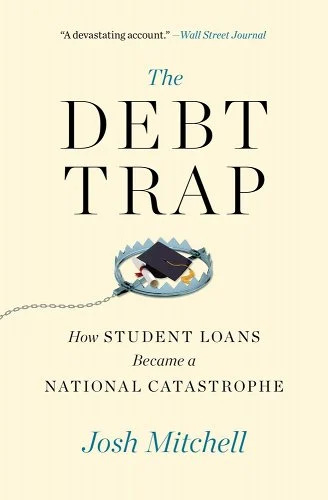
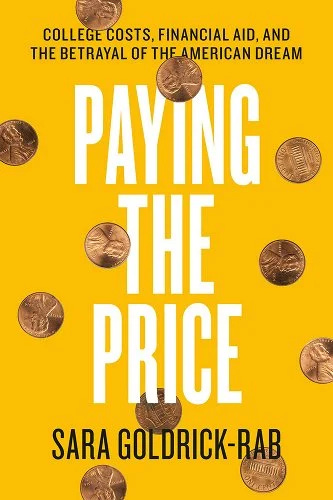
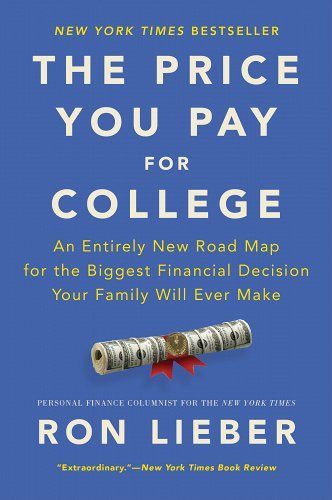

The Debt Trap: How Student Loans Became a National Catastrophe by Josh Mitchell
Indentured Students: How Government Guaranteed Loans Left Generations Drowning in Student Loan Debt by Elizabeth Tandy Sheerer
The Price You Pay for College: An Entirely New Road Map for the Biggest Financial Decision Your Family Will Ever Make by Ron Lieber
Paying the Price: College Costs, Financial Aid and the Betrayal of the American Dream by Sara Goldrick-Rab
Collectively these four books tell you that A. The student loan system was not designed with the idea of making college affordable in mind, B. that everyone knows the student loan system is unbelievably messed up because of the original sin of its design, and C. that the non-wealthy face an incredible burden when it comes to not just money, but time when it comes to pursuing the help that is available.
Mitchell’s book on student loan debt is an interesting artifact of the concerted refusal to follow the evidence to the most logical conclusion. The Debt Trap is fantastic at exposing the illogic of the current system and illuminating the individual stories of people harmed by this system in tangible and heartbreaking ways. And then in the final chapter on solutions, he nibbles at the edges of the problem like a mouse with a cracker.
Mitchell is a reporter for the Wall Street Journal.
The subtitle of Lieber’s book is damning all by itself. How have we come to accept that the choice of college is the biggest financial decision a family will ever make?
Does that sound like a recipe for a thriving country?
To Make Sense of the Structural F’dupedness of Higher Education
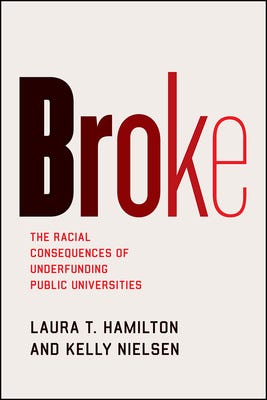

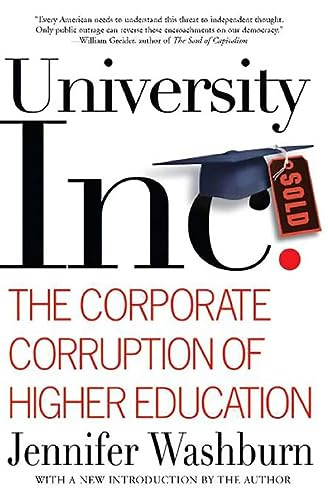
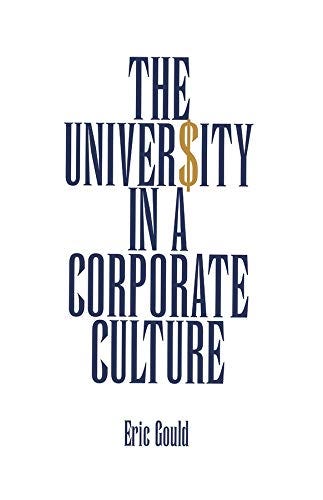
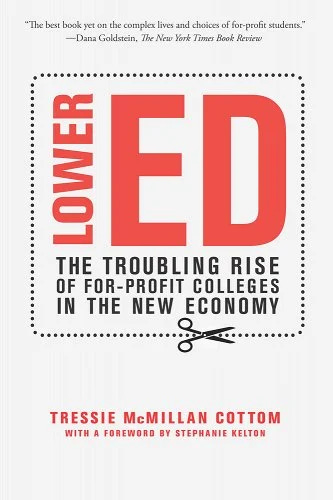
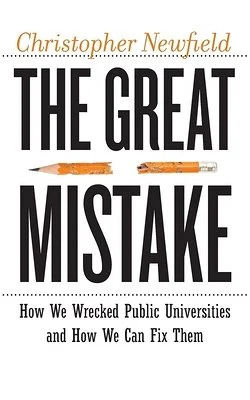

Lower Ed: The Troubling Rise of For-Profit Colleges in the New Economy by Tressie McMillan Cottom.
The Great Mistake: How We Wrecked Public Universities and How We Can Fix Them by Christopher Newfield
The University in a Corporate Culture by Eric Gould
University Inc.: The Corporate Corruption of Higher Education by Jennifer Washburn
Universities in the Marketplace: The Commercialization of Higher Education by Derek Bok
Broke: The Racial Consequences of Underfunding Public Universities by Laura T. Hamilton and Kelly Nielsen
The State Must Provide: Why America’s Colleges Have Always Been Unequal and How to Set Them Right by Adam Harris.
Just looking at my own shelves there’s six more books I own that could go here. In a lot of ways the titles tell the story of what happens when education is turned over lock, stock and barrel to the marketplace. I’ll note that the Bok and Gould books were published in 2003, the Washburn in 2005. No one can claim they didn’t see this coming, or that the consequences of what’s playing out at WVU and elsewhere is unintended. There were a thousand Cassandras prophesizing doom, but there was enough money to made in the meantime that those prophesies were ignored.
Bok was president of Harvard University from 1971 to 1991, and then again for an interim year from 2006 to 2007. When he left office the first time, Harvard’s endowment was around $5 billion. By 2007 it was $25 billion. Today it stands at $53 billion.
Books About Contingent Labor in Higher Education
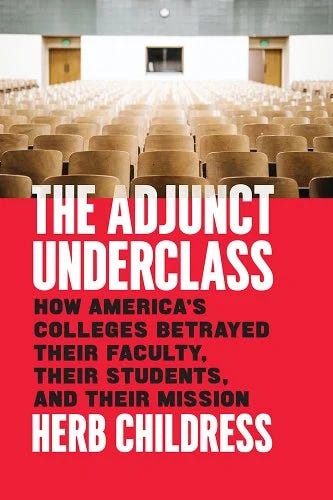
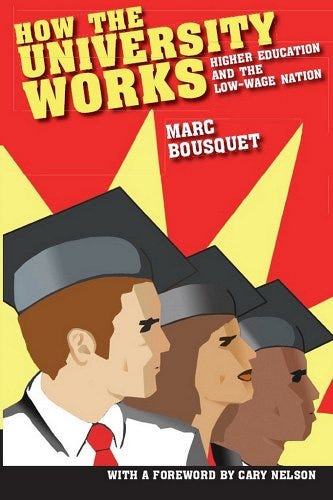
How the University Works: Higher Education and the Low-Wage Nation by Marc Bousqet
The Adjunct Underclass: How America's Colleges Betrayed Their Faculty, Their Students, and Their Mission by Herb Childress
A majority of workers teaching college make a bare subsistence wage or less. These books show how this reality shortchanges everyone who intersects with higher education instiutions.
A Great Adjunct Novel You Might Not Know
James Hynes’s The Lecturer’s Tale is funny, spooky, and particularly insightful about what it is like to live as one of academia’s afterthoughts. It’s not as well known as other campus novels, but it’s probably my favorite. Looking it up also revealed to me that Hynes has a new novel out that I wasn’t aware of that looks great too: Sparrow.
My Higher Ed Book
At the start of the pandemic, I believed that the sudden contraction to institutional revenue had the potential to be death blow to higher education. At the very least it should have been a wakeup call to address the structural problems that make the status quo unsustainable. Sustainable. Resilient. Free.: The Future of Public Higher Education is my blueprint for what institutions could (and should) look like freed from the dysfunctions of competition and the marketplace, and modesty blasted into the sun, it looks more on target by the day.
In short, there’s more than enough money to provide post-secondary education and training opportunities to all who qualify and desire, but it means taxing the ultra-wealthy institutions and looking at higher education as a system that’s meant to serve us all, not just the privileged few.
Links
This week at the Chicago Tribune I write about how the first innovation of generative AI in books isn’t an innovation at all, but just another route for scammers to sell crap to unsuspecting readers.
More great adventures with AI in Iowa where legislators wanting to know which books to pull from the library for “depicting or describing a sex act” asked ChatGPT to tell them what to do.
At LitHub, Lewis Buzbee talks about the difficulty of getting rid of books.
Penguin has bent reality past the breaking point in order to try to find positive quotes from negative reviews for the paperback edition of Jordan Peterson’s latest book.
From McSweeney’s this week: “This Summer I am Totally Going to Bang Emily Dickinson.”
This week’s indie publisher you should meet is Heyday, from Berkeley, California.
Recommendations
Unless I’ve missed something, no recommendation requests left in the queue this week after purposing them for my Tribune column, so if you want a custom pick based on the last five books you read, lines are short.
Book Giveaway
Last week’s books were won by Mo from Washington State.
This week’s books are:
The Neal Pollack Anthology of American Literature, from what I recall, was the first book every published by McSweeney’s. Sometime in the year 2000 I had a very small role in a promotional event for the book at a Toronto bar which involved someone being interviewed in a Wolverine superhero costume, and it’s possible that Neal got shirtless. I’m pretty sure I’m not hallucinating that, though it feels like a lifetime ago.
The Areas of My Expertise is John Hodgman’s first book just as he was on his way to becoming a national treasure.
To win the books, you must be a paid subscriber to the newsletter.
Substack is saying that this thing has a reading time of 18 minutes, but I don’t think that’s accurate because it counts the pictures like they’re text. Still, I should probably get out of here and leave you all alone until next week.
Stay cool,
John
The Biblioracle

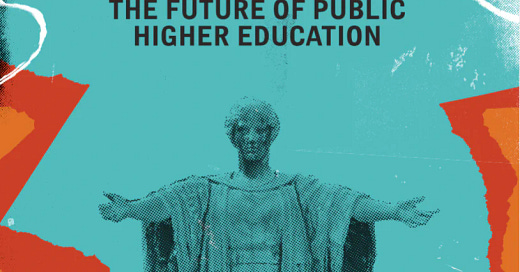




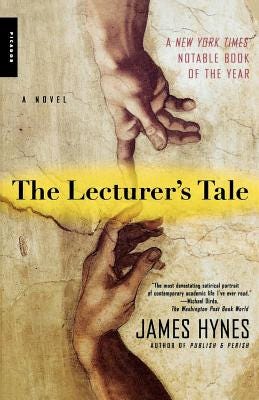

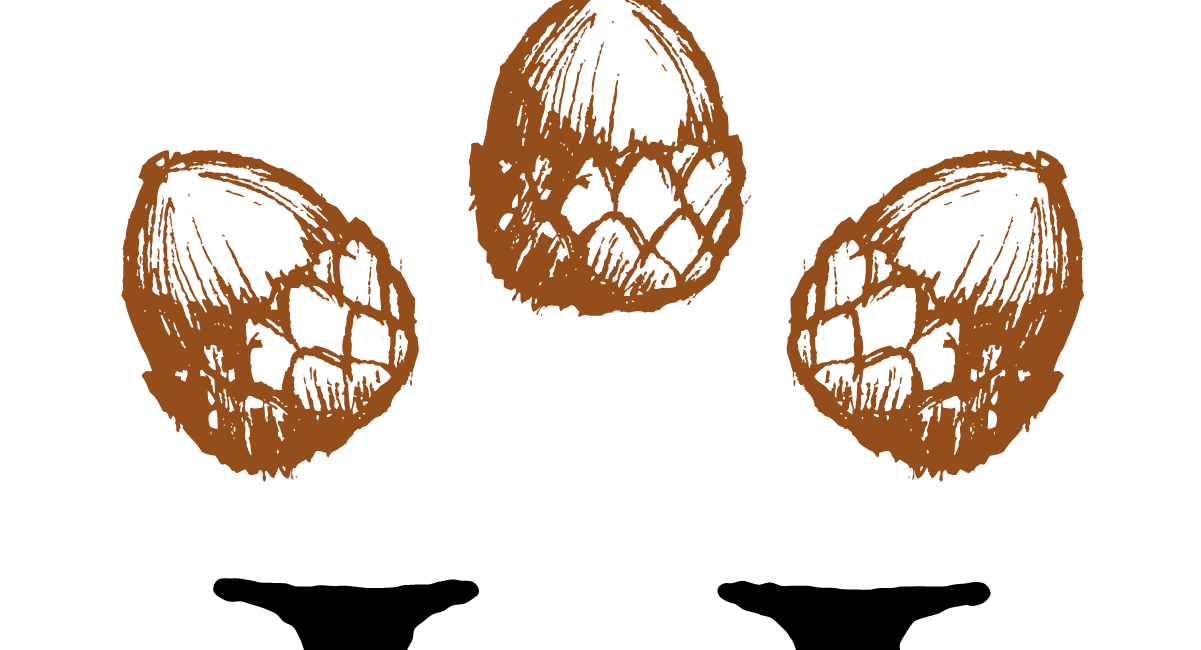

I feel something like a curse since I’ve spent most of my working life in two fields that capitalism is destroying: newspaper journalism and higher education. In both fields, the rhetoric of their proper mission is used to paper over the failure of both to do the job a healthy democracy demands. The most disheartening thing is that there are solutions, but the lack of leadership to make the changes we need. And a lack of understanding on the part of the public.
Fantastic article! The plight of adjuncts is shameful—they need a union but that’s a fairy tale possibility I assume. Reading this made my blood boil, especially when it comes to the boneheads in state legislatures who cut funding to public universities over and over. There were so many more tuition aid possibilities when I went to college. In VA, there was even a state program that paid for “displaced homemakers” to attend community college after a divorce left them with no money to get an education or qualifications to make a living. Can you imagine such a compassionate program today? I don’t know how kids from non-wealthy families cobble together enough aid or part time jobs to get through college today. Education should be a right, not a privilege for the rich. Metastatic capitalism is killing us.